Story And Photos By Angie Kay Dilmore
“Adaptive re-use is good stewardship of resources,” says Adley Cormier, Preservation Advocate for the Calcasieu Historical Preservation Society. “Is it more economical to retro-fit an old building or build a new one from scratch?” he asks, rhetorically.
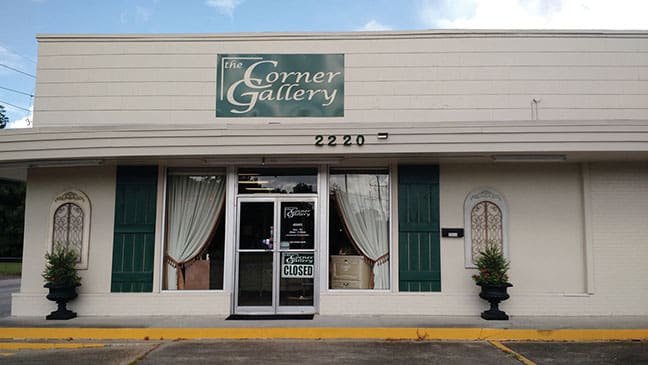
To answer Cormier’s question — even when one considers the costs of bringing an older building up to code and implementing energy efficient upgrades, older buildings can still be restored and repurposed for less cost than new construction. With the bones of an adaptively reused building intact, the expense of replacement is avoided.
Nancy Alexander operates her interior design business, The Corner Gallery, in what was once a Gaston Theriot feed store, meat market, and grocery store at the intersection of Ryan and Louis Streets.
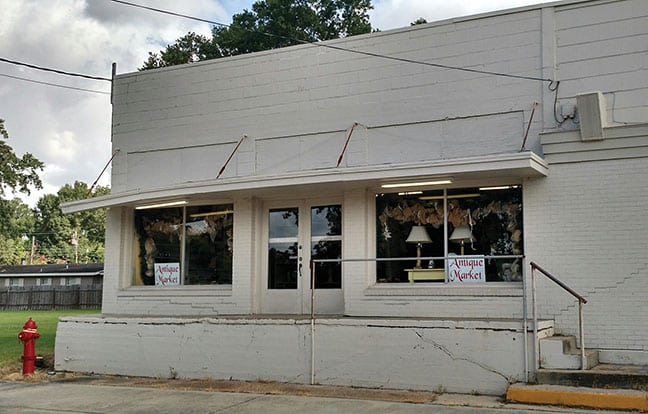
The room contains the original doors, which face Louis St. The original “floor safe” remains intact. The north and west walls still display the original boards from which feed sacks hung to serve customers.
“It’s easy to take an old building and make it fit your business,” says Alexander. “I took my business and made it fit into the nostalgia of the building.”
Alexander loves the history and charm of the old building, but there were also economic reasons she chose the location for her business.
“If I had taken the existing square footage, which is probably around 4,500-4,600 square feet, and had started from scratch, from the foundation up, it would have cost me a lot more money than what I have spent to refurbish, revive and remodel as you see it today. As a result, I’ve captured the nostalgia, and kept that part of history that otherwise would have been torn down, and we wouldn’t have it to enjoy today.”
Pump Up Preservation
Old gas stations seem to be particularly popular buildings to re-purpose. Lake Charles native Michael Flurry built a home from an old filling station on Seventh St. in Lake Charles. A vintage 1920s Pure Oil station on Broad St. was a garden center for a time and now serves as a hair salon. In Leesville, two enterprising young men have created a popular burger joint called Fat Boy and Skinny’s from an old corner gas station.
Randy Lejeune, contractor and owner of Rhino Rhenovators, built his business offices in an old gas station on Enterprise Boulevard in Lake Charles. “The architecture is cool, the lines are nice. They’re like a dying breed,” he says. “People like to tear them down because they’re usually on a convenient corner lot and people want to build something new.”
One of Lejeune’s most recent projects sits on Ford Street. He is repurposing the old Grace Mission Church into a private residence. Built in the 1830s, Lejeune says it was one of the first churches built in Lake Charles.
Lejeune has been in the historic renovation business since 1987 and started Rhino Rhenovators in 2005. He has restored and re-purposed numerous buildings along Broad Street and in the historic districts of Lake Charles.
“I’ve always had a passion for old houses, the architecture and the stories they tell. You can build a new house to look old, but you can’t put the character in them,” he says.
Adaptive Reuse Creates Local Jobs
Adaptive reuse creates more skilled jobs per square foot than new construction. According to economist and preservationist Donovan D. Rypkema in a lecture presented to the Historic Districts Council Annual Conference in New York City in 2007, the costs of new construction generally will be half materials and half labor. Rehabilitation will be 60 to 70 percent labor, with the balance being materials.
For example, hiring skilled labor to repair windows in a historic building ensures that dollars are spent locally rather than at an out-of-state window manufacturing plant.
These local skilled laborers and craftsmen take their paychecks and buy goods and services, which improves the local economy.
Brian Vallier, owner of Heist Wine Bar and Vallier at Home, has loved old buildings all his life — especially the old bank building on the corner of Ryan and Division Streets in Lake Charles. It was a dream come true for him when he was able to lease the space and transform the structure into an upscale wine bar and eatery.
The process was long and arduous, but Vallier persevered. In the process of repurposing the building, he utilized dozens of laborers and craftsmen. Numerous walls had to be torn down to create open spaces. A thick layer of concrete was painstakingly chiseled off the walls to expose original brick. New floors were laid. Woodwork preserved.
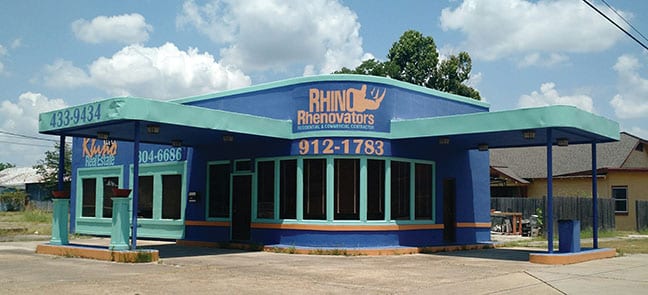
Rypkema also suggests that historic buildings serve as incubators for small businesses, which create new jobs. According to his article, 85 percent of all new jobs are created by firms employing fewer than 20 people.
Adaptively reused historic building space is generally less expensive to lease than industrial parks or shopping centers — a win-win opportunity for small business owners.
Repurposing Increases Property Values
According to Donovan, properties in local historic districts appreciate at faster rates than the local market does overall. Historic districts are also less vulnerable to the volatility that often affects real estate during interest rate fluctuations and economic downturns.
Evia Hodge, a realtor with Lakeside Properties, agrees, and adds, “If a home in the Charpentier District of Lake Charles is restored to its original turn-of-the-century architecture, the resale value will definitely be higher than other homes in the same area. Many of these homes have been updated to retain the traditional look but with modern day conveniences. The same is true for businesses in historic buildings.”
Tourists Appreciate Historic Preservation
Successful adaptive reuse prompts tourists to visit an area longer and spend more dollars per day, adding to the local economy. Southwest Louisiana has several examples of these sorts of revenue-generating repurposed attractions that are enjoyed by both tourists and the local community.
Central School, 609 Kirby St.
The Central School Arts & Humanities Center was designed and built by noted New Orleans architects Favrot & Livaudais in 1912. The Center is located at the heart of the Charpentier Historic District.
In 1993, with the support of a grassroots community effort, the school was restored and became an arts and humanities center for the area. Working closely with the Arts & Humanities Council of Southwest Louisiana, the Calcasieu Preservation Society, artists and non-profit organizations, architects redesigned Central School’s classrooms to serve as studios, galleries and performance spaces.
In addition to the Arts and Humanities Council, tenants include visual artists, music teachers, the Lake Charles Symphony office and the Children’s Theatre Company. The Art Associates and Black History galleries showcase local, national and international artists. The center’s historic yet state-of-the-art auditorium hosts theater productions, musical performances and film events.
Particularly popular with tourists is the Mardi Gras Museum. “Whenever we have travel media, groups or conventions in town, the Mardi Gras Museum is one of the No. 1 things that people want to experience on the Historic Tour,” says Angie Manning, communications director at the Southwest Louisiana Convention and Visitors Bureau. “The museum features the most Mardi Gras costumes found anywhere in the world, and it’s a way for visitors to experience Mardi Gras year round. It’s a true gem in Southwest Louisiana.”
1911 Historic City Hall and Cultural Center, 1001 Ryan St.
After extensive restoration, “Old City Hall,” as it is sometimes called locally, has served as an art gallery and cultural facility since 2004. They feature both international and local artists in traveling exhibitions.
“It’s wonderfully historic and has a fantastic history relative to the fire of 1910, and its resurrection from the ashes and history that followed,” says Manning.
Henning Cultural Center,
923 Ruth St., Sulphur
Built in 1904, this structure was the original home of John T. Henning. Over the years, it fell into disrepair. Then Sulphur Parks and Recreation bought the property in 2002 and repurposed the building into an arts center in 2004.
The center now hosts traveling exhibits and shows by local artists.
Nearby sits the Brimstone Museum, originally a train station and now a Sulphur museum.
Both attractions are part of Heritage Square, a popular venue for festivals and other community events that ultimately attract tourists and add to the local economy.
Cormier says adaptive reuse keeps the heart of a city beating and allows for sensible and sustainable growth. “Re-working older buildings means more square footage in established neighborhoods with existing infrastructure. When creativity and innovation meet new building technology, older buildings can become economic powerhouses by providing more value for money spent.”



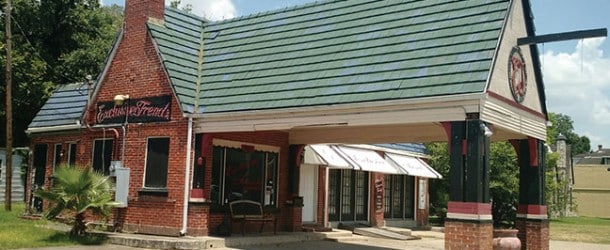

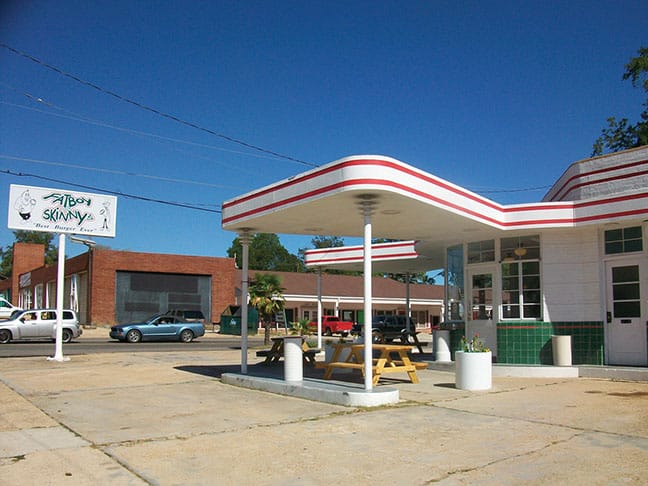
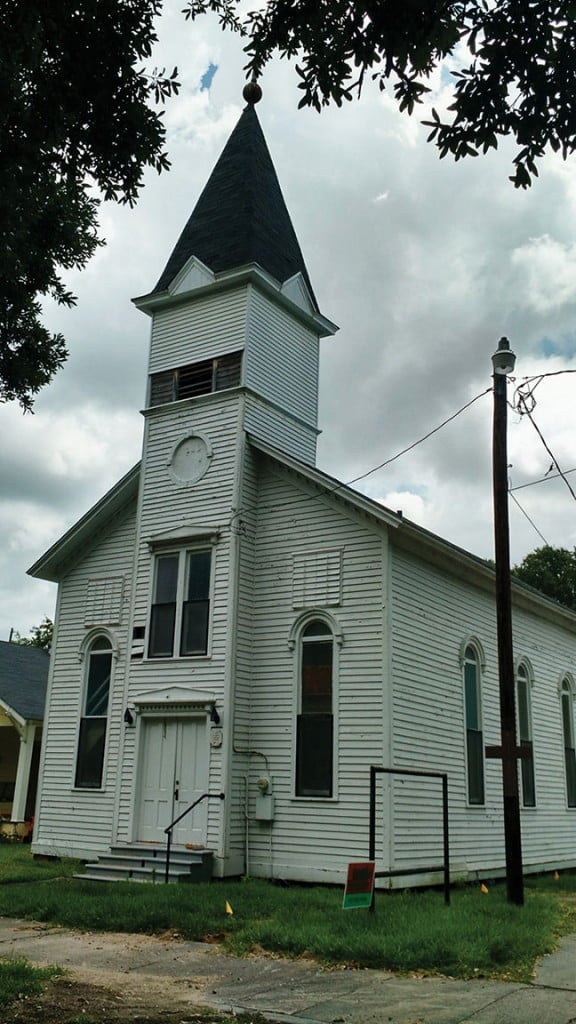
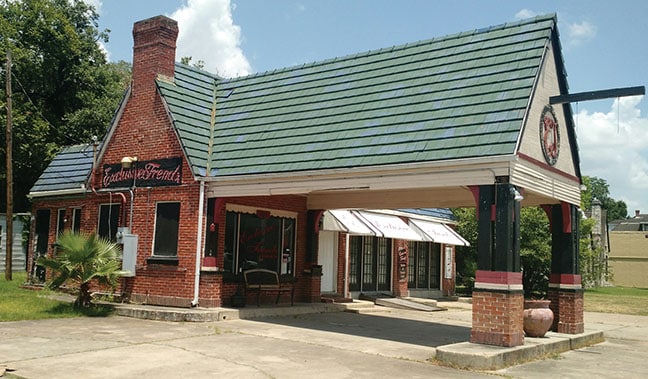












Comments are closed.